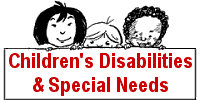 |

| |
|
| ||
|
|
Reviewer: Allison Martin Cerebral Palsy : A Complete Guide for Caregiving, by one of the leading experts in the field, provides in-depth coverage of the major issues of cerebral palsy. It addresses many of the issues confronting parents of children with cerebral palsy in a question and answer format. Cerebral Palsy : A Complete Guide for Caregiving covers a range of ages (from baby to adult) and range of severity (impaired to handicapped). A large portion of the book is dedicated to questions and answers regarding the three major forms of cerebral palsy: diplegia, hemiplegia and quadraplegia. Developmental stages, milestones and issues for each type of cerebral palsy are described, from infant to teenager. Medical problems associated with cerebral palsy and intellectual, psychological and social development are addressed for all ages. Lastly, related topics such as finanical care, navigating the educational system, legal issues, and hospitalization are also covered. Supplemental information is provided on caregiving procedures and equipment such as tube feeding, adaptive equipment, growth charts, and orthopedics. A very comprehensive dictionary rounds out the book. Parents of children with cerebral palsy or motor delays will find Cerebral Palsy : A Complete Guide for Caregiving to be an exceptional reference book for their child. Parents of preemies will also find a wealth of information here, as the scope of the book encompasses many developmental issues related to prematurity. Quote from the book on diplegia:
|
||
Children's
|
Comeunity : Parenting | Adoption | Special Needs
Comeunity www.comeunity.com Parenting Support for Your Unique Family